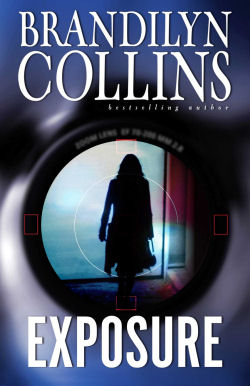|
Bottom
line, I use speakers attributes (e.g., he said, she said) as little as
possible.
Some writers argue that readers
skip right over “he said,” so why worry about using it? It informs us
who is speaking, and other than that, readers just don’t notice it. My
response? Would you rather use a technique whose sole raison
d’etre is to inform, and otherwise adds nothing to the
dialogue, or would you rather use one that heightens the passion of the
scene?
Sure, SAs are needed from time
to time to tell us who’s talking. Said is Old
Reliable when it comes to speaker attributes (SAs). Many authors
advocate using said and eschewing other descriptive
words such as screamed, whispered, etc. More on
that opinion later.
I’ll be honest, using as few SAs
as possible will make writing harder. Your writing will slow down. It’s
much easier to stick in a “he said” than to create an effective
alternative that enhances the scene.
Here are my choices for
informing the reader of who’s talking.
1. Add nothing. Just let the
dialogue speak for itself.
2. Add an action, descriptive, or thought beat.
3. Add an SA when neither #1 nor #2 works best.
Let’s look at these in more
detail.
1. Add nothing.
The purest form of dialogue is only
dialogue, written so spot-on that it emotes all by itself.
Many times when an SA is used,
it’s not needed at all. “Stop it right now!” he shouted. Why
tell the reader he shouted when the exclamation point makes that clear?
You’ve just explained what the dialogue indicates by its own merit. The
phrase he shouted just adds extra words. And if you
hear me on nothing else, hear me on this: extra words ruin
sentence rhythm and weight the action. Get rid of extra words
whenever you can.
Okay,
you might argue, so don’t add he shouted. But why
not add he said? Well, that’s a problem. Because he
didn’t just say it. He shouted
it. Said denotes little to no emotion. When you
write dialogue that emits emotion only to follow it with an emotionless
SA, you’ve just diminished the effectiveness of the line.
So, how many dialogue lines
should you write with no reminder of any kind as to who’s talking?
Depends on the conversation. If it consists of short, punchy sentences,
you can have more lines of pure dialogue than if people are speaking in
multiple sentences. You certainly don’t want the reader to have to stop
and count lines to remind themselves who is speaking, so don’t err on
the side of confusion. Which brings us to . . .
2.
Add an action,
descriptive, or thought beat.
|
An
action beat is a movement of
some kind.
A descriptive beat describes
such things as the speaker’s displayed attitude, facial expression, the
appearance of some other part of his body, or his vocal inflection.
A thought beat is something the
speaker is thinking or perceiving about the other person. (Be careful
that you’re in this person’s POV for the entire scene.)
Technique #2 is a great choice
for heightening the emotion of the scene. It helps the reader feel
what’s going on instead of just reading it. Problem is you can’t use an
action beat for every line of dialogue, because it’ll sound repetitive.
This becomes a problem of rhythm. When I write,
rhythm is never far from my mind. So, how to break the repetition of
too many beats? Go back to #1—add nothing. Then return to adding a
beat. Or two. One way to make beats less repetitive is to vary where
they’re placed in the line of dialogue. Put a beat before the dialogue.
Put the next beat after the first line of dialogue. You’ll also want to
vary what kind of beats you use.
3. Add an SA when
neither #1 nor #2 works best.
Even so, on occasion bouncing
between #1 to #2 isn’t going to work for the sake of rhythm. This is
going to happen more often when you have a group of three or more
people speaking. Whenever I face this point, I add an SA. But it really
is my last resort.
Sometimes when I add an SA, I do use a descriptive one—he
whispered, etc—if it’s the most effective. But not often.
By saving SAs as the last
resort, we force ourselves away from lazy writing. Instead of the quick
informative phrase, search for the most emotive pure dialogue or beat
as a way to deepen the scene.

|